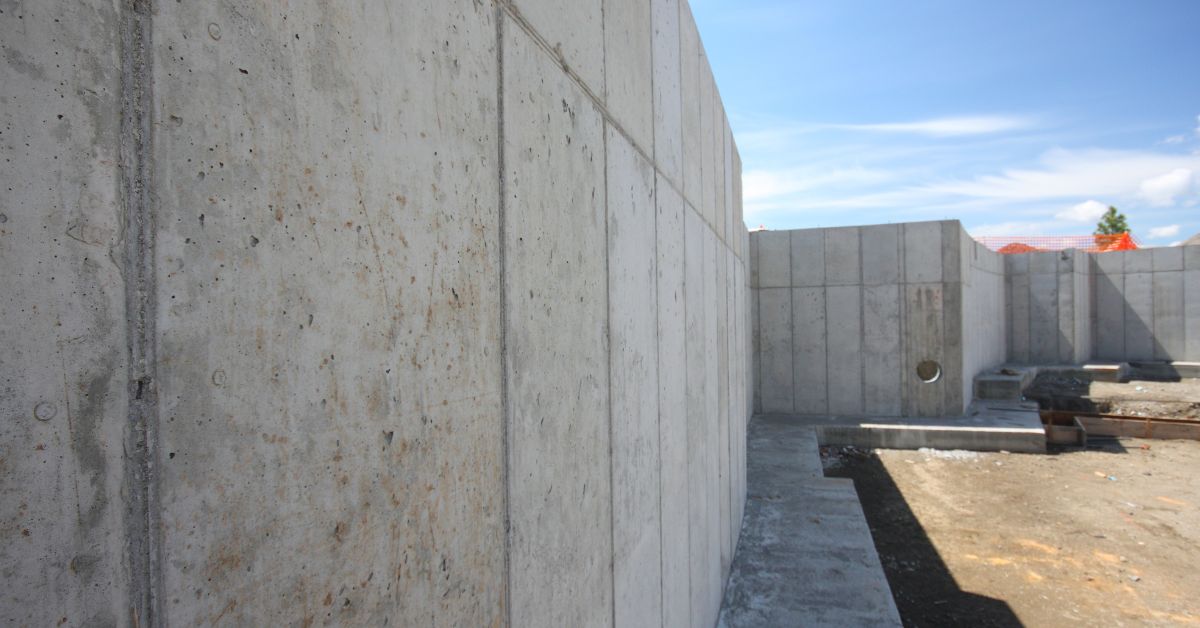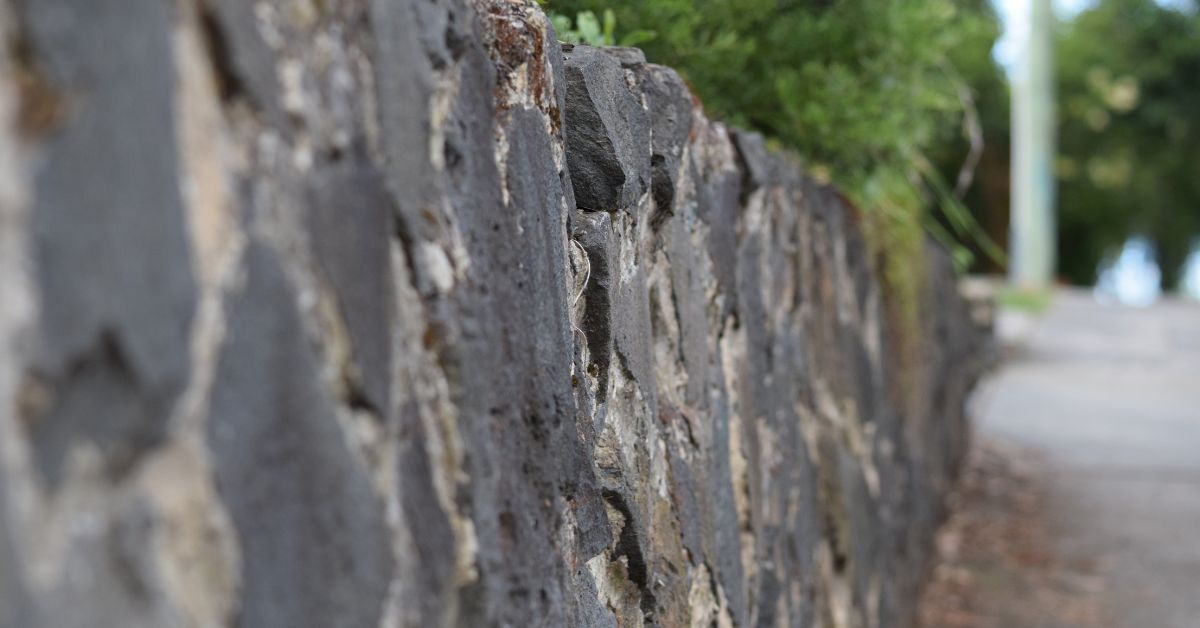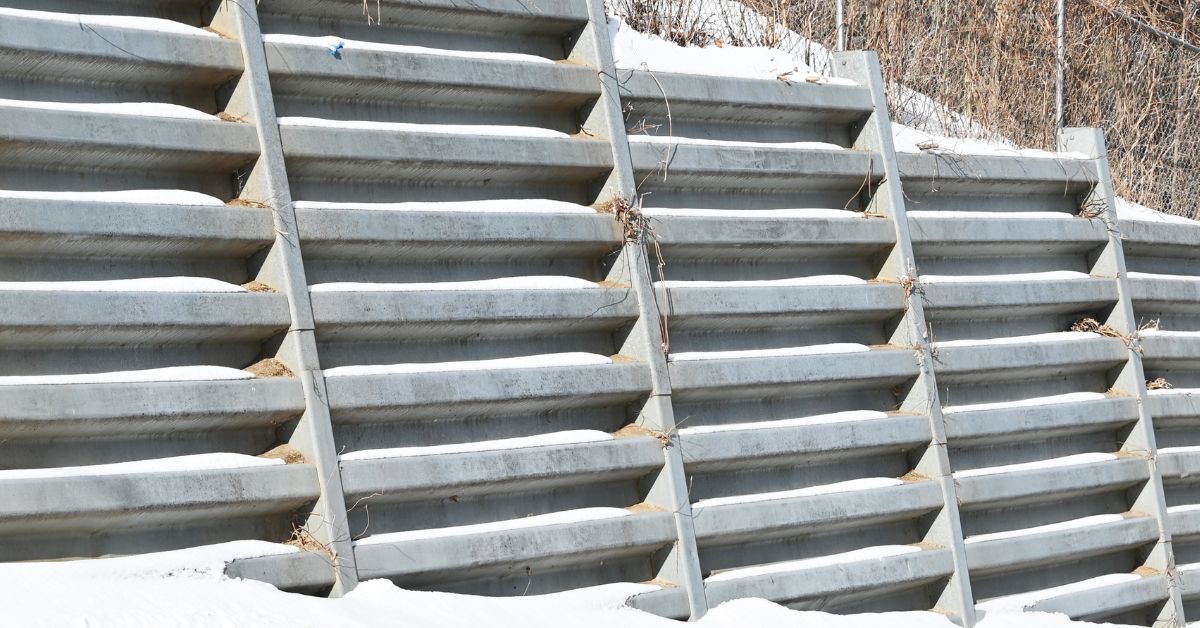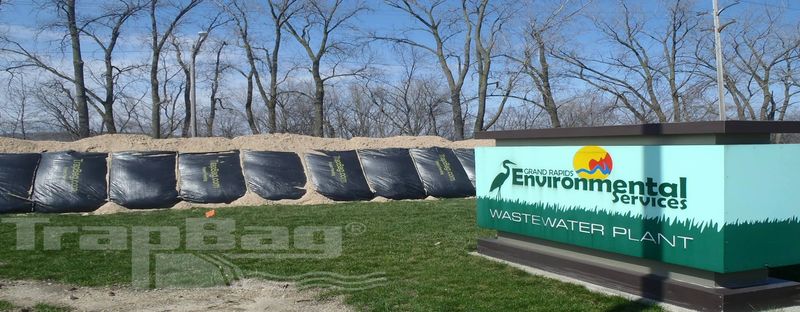Using TrapBag for Retaining Wall Solutions
As a sturdy, durable barrier for flood control and landslide damage mitigation, TrapBag is a trusted choice for retaining walls because it’s ideal for stabilizing slopes and preventing flood damage. TrapBag barriers are reliable, easy to deploy, and cost-effective as a retaining wall.
Gravity Walls
Engineers design gravity walls with a vertical shape. The wall uses its own weight to prevent soil or sand from shifting.
TrapBags can be used alone to create a gravity wall, offering a sturdy and long-lasting solution for retaining soil or acting as a reservoir.
MSE Walls
Mechanically stabilized earth (MSE) retaining walls use a combination of concrete blocks, soil reinforcements, and backfill to stay standing. They can last for decades and are the preferred choice for creating retaining walls near highways and bridges with heavy traffic.
TrapBags can be utilized in the construction of MSE walls by providing a stable structure for the soil reinforcements and backfill to be placed and compacted effectively.
How TrapBag Retaining Walls Prevent Flooding
TrapBag is fast, efficient, and easy to install as a retaining wall by design. Each cell in the barrier lends its strength to the surrounding cells, allowing it to retain thousands of gallons of water as a reservoir or prevent soil erosion. These barriers have even been successfully tested by the U.S. Army Corps of Engineers.
TrapBag is easy to set up and deploy as a retaining wall in a matter of hours, rather than days, with just a few simple steps:
-
Open the packaging: Each TrapBag barrier comes folded up on a pallet. Pull it out like an accordion. From there, it can be stretched out up to 50 linear feet per unit.
-
Place or stack the barrier where needed: Place the TrapBag barrier where you need it against the affected slope or other area to prevent erosion and protect it from flooding.
-
Fill the cells: A team of two people and a third person operating a skid steer or excavator can fill your TrapBag barriers in a matter of minutes with sand, gravel, or concrete. You can also stack them on top of each other to add more height.
Who We Serve
TrapBag works across multiple industries and organization types worldwide to protect properties and lives from the consequences of erosion and flooding. The groups we work with include:
Construction companies
Construction companies use TrapBag as a retaining wall for flooding and soil retention to provide a stable setting for work and prevent stormwater runoff from getting into city water systems. These barriers save crews and stakeholders time and money.
Learn More »Municipalities
Municipal agencies use TrapBag to create retaining walls for flooding and ground stabilization near residential areas, city streets, and more.
Learn More »Civil & coastal engineers
TrapBag helps civil and coastal engineers across the world protect waterside infrastructure, including highways and residential areas, from coastal flooding and erosion.
Learn More »Environmental protection
Environmental protection groups and agencies can use TrapBag as a material to protect low-lying wetlands and coastal habitats from erosion and flood damage.
Learn More »Projects
How TrapBags Compare to:
Concrete walls are created primarily out of cement that crews can pour into place or lay in blocks to prevent flooding or soil settlement. They can last for decades and are the preferred choice for creating retaining walls near highways and bridges with heavy traffic.
However, concrete walls can take months or years to complete and can be challenging to maintain. For emergencies, TrapBag makes a better retaining wall for flood control to protect infrastructure and residences in low-lying areas.

Natural stone retaining walls have a classic, elegant look that can blend in beautifully with the environment around them for permanent retaining walls. However, they’re typically far more expensive than other types of materials.
TrapBag is far more cost-effective, especially if you need to install or reinforce an existing retaining wall with relatively little time.

Metal is a cost-effective retaining wall product for permanent or otherwise long-term projects. However, it tends to be unsightly and is prone to corroding more easily than concrete or natural stone, especially with prolonged exposure to rain or seawater.
TrapBag barriers can be filled with concrete to create a more permanent barrier that withstands the elements better than most metal retaining walls.

Why Choose TrapBag for Retaining Wall Construction?
TrapBag improves on the design of other traditional retaining walls and flood control barriers. Each barrier consists of a series of pentagonal cells with one sloped site and one vertical side that reinforce their structural integrity.
Our staff is also here to ensure our clients can protect their projects and infrastructure from erosion and other sources of damage. Disasters don’t take time off, so we’re here to help 24/7 across multiple countries and continents.

